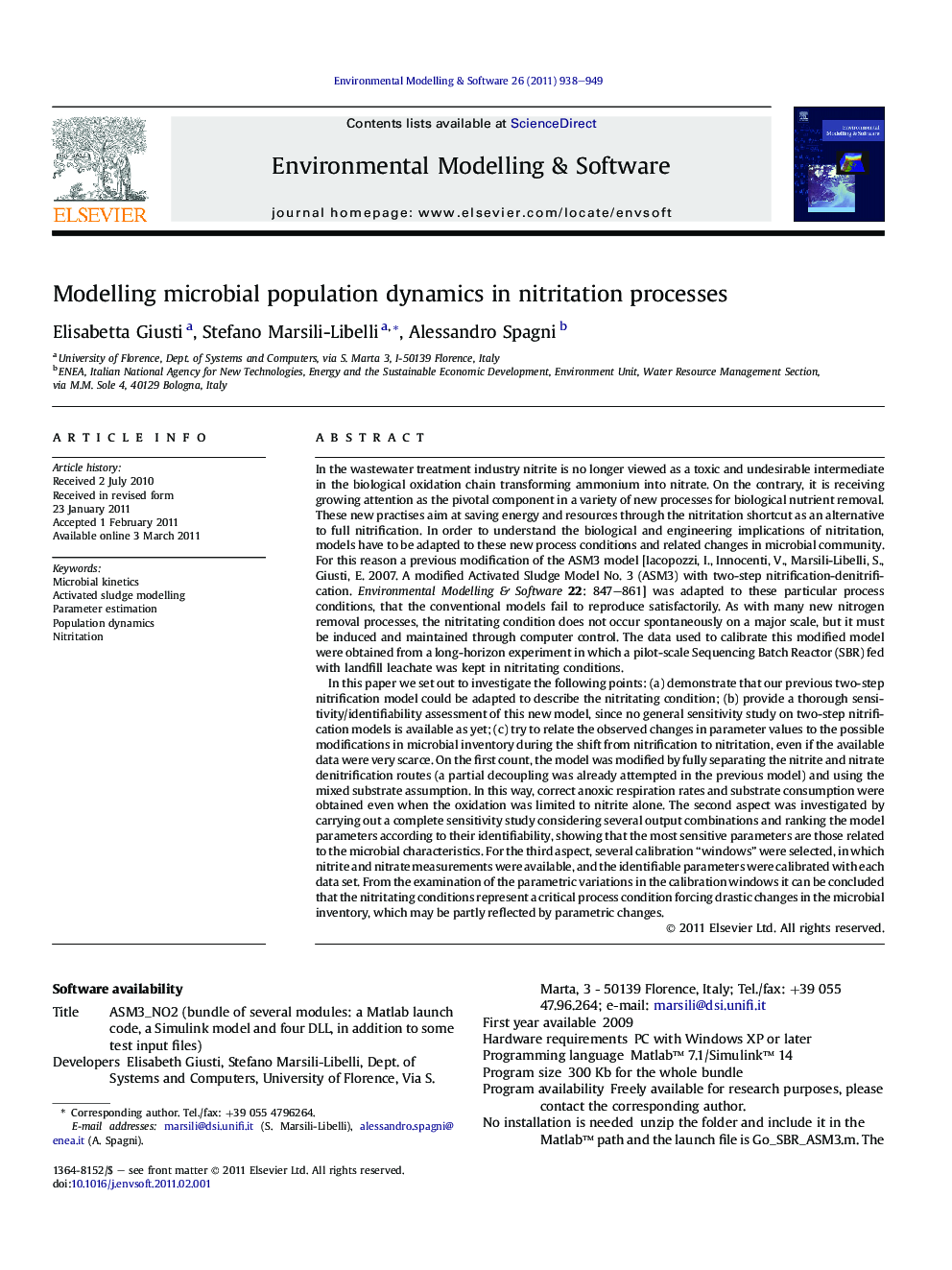| کد مقاله | کد نشریه | سال انتشار | مقاله انگلیسی | نسخه تمام متن |
|---|---|---|---|---|
| 570251 | 876799 | 2011 | 12 صفحه PDF | دانلود رایگان |

In the wastewater treatment industry nitrite is no longer viewed as a toxic and undesirable intermediate in the biological oxidation chain transforming ammonium into nitrate. On the contrary, it is receiving growing attention as the pivotal component in a variety of new processes for biological nutrient removal. These new practises aim at saving energy and resources through the nitritation shortcut as an alternative to full nitrification. In order to understand the biological and engineering implications of nitritation, models have to be adapted to these new process conditions and related changes in microbial community. For this reason a previous modification of the ASM3 model [Iacopozzi, I., Innocenti, V., Marsili-Libelli, S., Giusti, E. 2007. A modified Activated Sludge Model No. 3 (ASM3) with two-step nitrification-denitrification. Environmental Modelling & Software22: 847–861] was adapted to these particular process conditions, that the conventional models fail to reproduce satisfactorily. As with many new nitrogen removal processes, the nitritating condition does not occur spontaneously on a major scale, but it must be induced and maintained through computer control. The data used to calibrate this modified model were obtained from a long-horizon experiment in which a pilot-scale Sequencing Batch Reactor (SBR) fed with landfill leachate was kept in nitritating conditions.In this paper we set out to investigate the following points: (a) demonstrate that our previous two-step nitrification model could be adapted to describe the nitritating condition; (b) provide a thorough sensitivity/identifiability assessment of this new model, since no general sensitivity study on two-step nitrification models is available as yet; (c) try to relate the observed changes in parameter values to the possible modifications in microbial inventory during the shift from nitrification to nitritation, even if the available data were very scarce. On the first count, the model was modified by fully separating the nitrite and nitrate denitrification routes (a partial decoupling was already attempted in the previous model) and using the mixed substrate assumption. In this way, correct anoxic respiration rates and substrate consumption were obtained even when the oxidation was limited to nitrite alone. The second aspect was investigated by carrying out a complete sensitivity study considering several output combinations and ranking the model parameters according to their identifiability, showing that the most sensitive parameters are those related to the microbial characteristics. For the third aspect, several calibration “windows” were selected, in which nitrite and nitrate measurements were available, and the identifiable parameters were calibrated with each data set. From the examination of the parametric variations in the calibration windows it can be concluded that the nitritating conditions represent a critical process condition forcing drastic changes in the microbial inventory, which may be partly reflected by parametric changes.
► We extended the validity of our model ASM3_2N to include the nitritating condition.
► A sensitivity analysis showed that the microbial parameters are the most sensitive.
► The nitritating conditions can be related to parametric changes.
Journal: Environmental Modelling & Software - Volume 26, Issue 7, July 2011, Pages 938–949